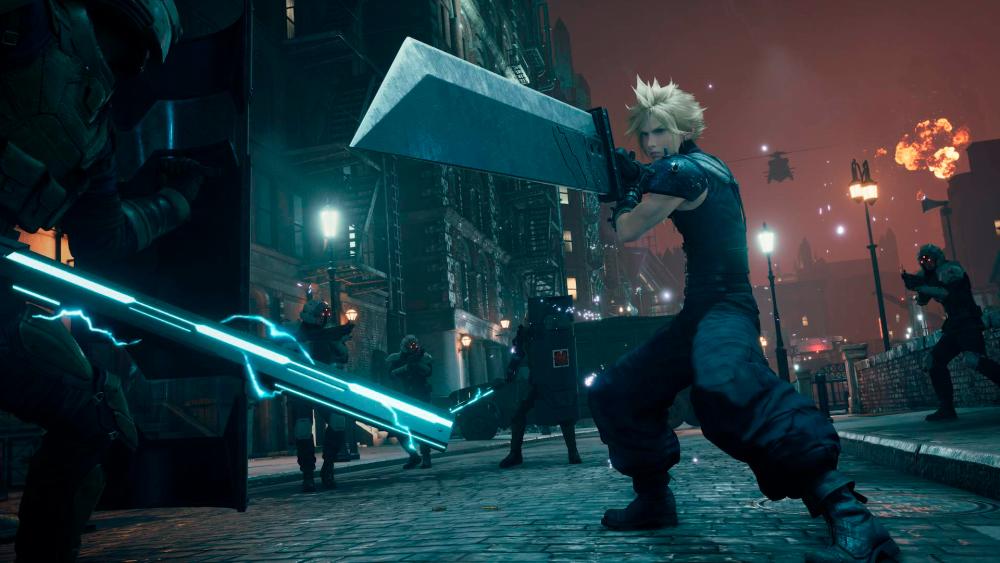AS the Chinese New Year holidays approach, consider indulging in the timeless allure of one of gaming’s most iconic series, Final Fantasy VII.
It sets the perfect stage for the eagerly awaited release of Final Fantasy VII Rebirth, exclusively available on PlayStation 5 (PS5).
As the sequel to 2020’s Final Fantasy VII Remake, a lot is riding on the game, as it will cover a huge chunk of the middle portion of the original game.
Due to the series’ sprawling saga, officially known as the Compilation of Final Fantasy VII, this article will briefly touch on everything from 1997’s Final Fantasy VII (FF7) up to the aforementioned remake in a spoiler-free, chronological manner.
The beginning
After six Final Fantasy games that used 2D sprite graphics, Japanese developer Square stepped up their game development by harnessing the first PlayStation’s hardware to develop and release FF7 using 3D graphics in 1997.
Lauded as one of the best games not just for that year but decades thereafter, FF7 focuses on the story of Cloud Strife, a mercenary hired by the eco-terrorist cell Avalanche to conduct missions against the Shinra Electric Power Company.
One of their missions eventually throws the group into a globe-trotting mission to end not only the Shinra Electric Power Company but also Sephiroth, the game’s main villain and a byproduct of the company’s illegal activities.
FF7 is firmly embedded in modern pop culture for its endlessly riveting story that is full of twists and turns and its characters are just as iconic now as they were when the game first released.
For those who want to play the original FF7, it is available on the PlayStation Store for the PlayStation 4 (PS4) and PS5 for RM61.

Rewind
In 2004, Square Enix released Before Crisis: Final Fantasy VII, which put players in control of the Turks, a covert group that carries out clandestine dirty jobs for the Shinra Company.
Though they sporadically appeared in FF7 for Strife to fight, the group is fleshed out more in Before Crisis, which serves as the prequel to the events in the 1997 game.
To properly expand on an important character who briefly appears in FF7 but plays a crucial role in the story and Strife’s character development, Square Enix released Crisis Core: Final Fantasy VII in 2004.
This game focuses on Zack Fair, a member of Soldier, the Shinra Company’s military arm consisting of genetically enhanced super soldiers.
Another member of Soldier who would become the series’ main bad guy, Sephiroth, is featured prominently in the story, as Crisis Core functions as the main prequel to FF7, extensively expanding the stories of Fair and the latter.
Crisis Core was recently remade and released two years ago in the form of Crisis Core: Final Fantasy VII Reunion. Like the original FF7, Reunion is available on the PlayStation for RM199 on both the PS4 and PS5.
Awful spin-offs
Following the events of FF7, Square Enix made the computer-animated film Final Fantasy VII: Advent Children, detailing an incident that occurs two years later in the original game’s events, pitting Strife and his friends against the “remnants of Sephiroth”.
One year later, the shooting game Dirge of Cerberus takes place, focusing on Vincent Valentine, an optional character-turned-main character, going against the newly introduced villain Deepground.
The game is terrible and the story performs mental gymnastics to justify its existence, it is suggested that gamers either watch a recap on YouTube or ignore it completely.

Here and now
Finally, we have caught up to the modern era of FF7, which seeks to launch a new trilogy that not only remakes the original game, but also tells it in a new way while preserving the latter’s story.
In the heat of 2020’s pandemic, Final Fantasy VII Remake was released, with new and old fans watching the remake turn the first five hours of the original game into a full length story.
Remake covers everything from Strife’s entry in Avalanche to the climax of at the top of the Shinra Building, and then some, because like previously mentioned, the game introduces something new to shake up the original’s story.
Towards the end of the game, certain things happen, causing a kind of split in the timeline, where the original FF7’s events continue to exist but Remake takes a different course.
At the end of this month, fans will return to the world of this new timeline, with Final Fantasy VII Rebirth continuing directly where Remake ended. The sequel will cover the middle of the original FF7, and the final act of this new trilogy will pick up in another sequel down the road.
For those that have yet to experience Remake, you can get both the game and pre-order Rebirth as a “Twin Pack” on the PlayStation Store for RM299.
Final Fantasy VII Rebirth will launch on Feb 29.









